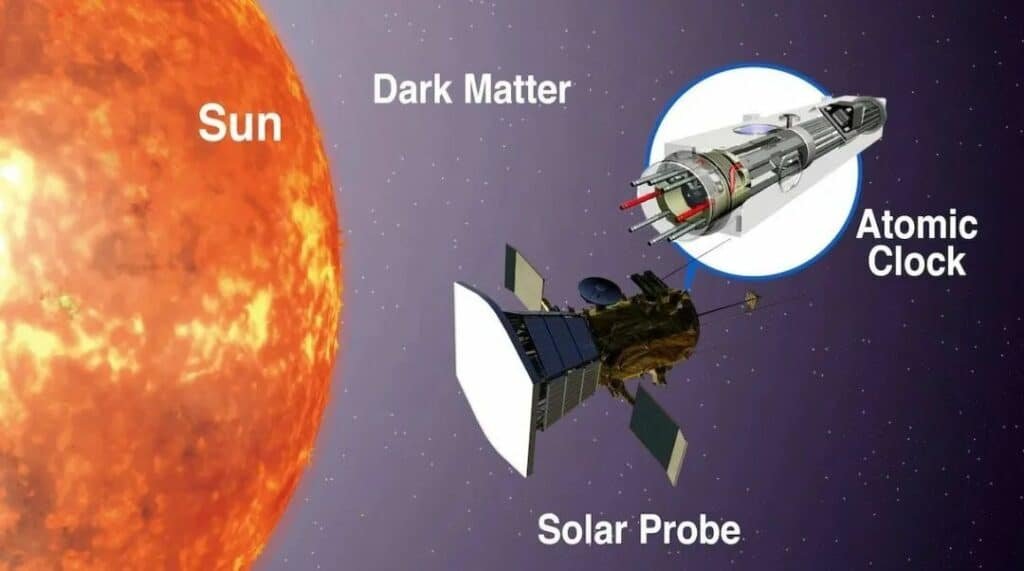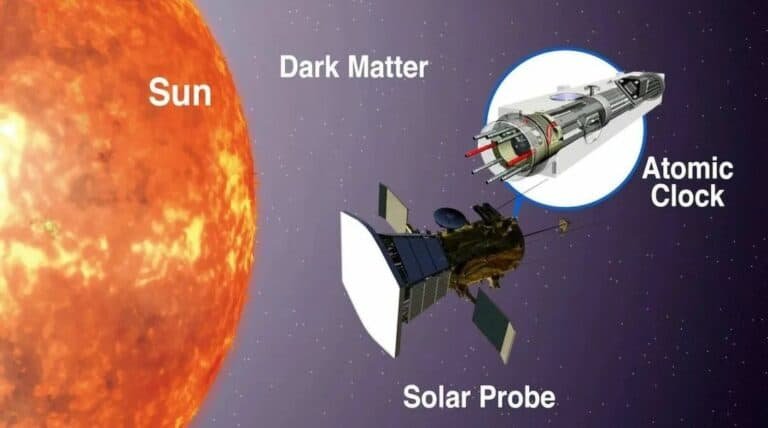
Dark matter accounts for more than 80% of the total mass of the universe, is unevenly distributed, and is still not directly detectable on Earth.
A key point in dark matter research is to estimate the local dark matter density, which determines how many dark matter particles will pass through the detector in a given time.
Dark matter particles between Mercury and the Sun are very dense, and the dark matter here is virtually undisturbed by information from planetary orbits, making it ideal for dark matter particle experiments.
Recently, some scientists have said that dark matter can be measured within Mercury’s orbit using the atomic clock on the Parker Solar Probe.
Atomic clocks determine time by observing the frequency of photons released during an atomic leap.
But the oscillations of ultralight dark matter particles can slightly affect the energy levels of atoms and thus the frequencies of photons.
So scientists can measure the effect of ultralight dark matter particles by atomic clocks.
And theoretically, the dark matter particles between Mercury and the Sun are so dense that they could cause a larger oscillation signal.
A related paper was published in Nature Astronomy.
